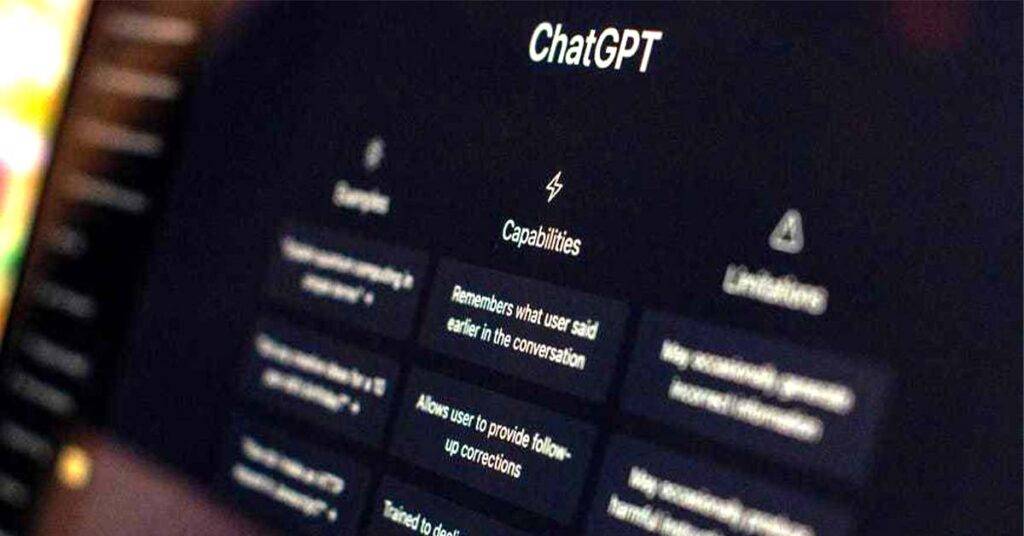What is ChatGPT?
ChatGPT is an innovative natural language processing AI developed by OpenAI. It’s designed to understand and generate human-like text based on the inputs it receives.
But how exactly did ChatGPT come about, what are its applications & how does it work? This guide will step into these topics and more.
The Origin and Development of GPT
The journey of ChatGPT began with the development of the original Generative Pretrained Transformer (GPT) model. This machine learning model, developed by OpenAI, was designed to understand and generate human-like text.
GPT was a transformer-based model, an architecture introduced in the paper “Attention is All You Need”. The novelty of transformers is their use of self-attention mechanisms, which help the model to understand the context and relevance of words in a sentence.
Following the success of the original GPT, OpenAI introduced GPT-2 in 2019. This improved model had 1.5 billion parameters and generated even more coherent and contextually relevant text. However, it was initially not fully released due to concerns about misuse.
ChatGPT, which we interact with today, is based on the GPT-3 model, a further evolution with a whopping 175 billion parameters.
The Purpose and Application of ChatGPT
ChatGPT serves multiple purposes and has broad application potential. It can be used for drafting emails, writing essays, brainstorming ideas, creating content, translating languages, tutoring in a variety of subjects & even casual conversation.
One of the major use cases is in customer service, where ChatGPT can handle repetitive queries, freeing up human staff for more complex tasks. Recognising the growing significance of AI, educational initiatives such as ChatGPT Course have emerged, allowing individuals to comprehend, implement, and leverage such technologies effectively. It’s also used in industries like gaming for creating dynamic and interactive dialogues, making the gaming experience more immersive.
How Does ChatGPT Work?
ChatGPT operates on the principles of machine learning. It was trained on a diverse range of internet text, but it doesn’t know specifics about which documents were in its training set or have access to any personal data unless explicitly provided during the conversation.
The model generates responses to inputs by considering each word (or token) in a sentence one at a time. It uses the context of the input to predict the next word, building a response in a sequential manner.
It doesn’t have consciousness or beliefs but generates responses based on patterns it learned during training.
Capabilities
ChatGPT has several impressive capabilities:
- Language Understanding: It can comprehend and respond in context to various language inputs.
- Content Creation: It can generate human-like text, such as articles, reports, and creative writing.
- Language Translation: It can translate text between different languages, although it’s not as accurate as specialized translation tools.
- Tutoring: It can provide explanations on a wide variety of topics based on the information it was trained on.
Limitations and Challenges of ChatGPT
Despite its impressive capabilities, ChatGPT has several limitations:
- Inaccurate Information: It can sometimes generate incorrect or misleading information, as it doesn’t have the ability to access real-time data.
- Lack of Context Understanding: It can lose track of context in long conversations or complex inquiries.
- Unpredictability: It can sometimes generate unexpected outputs.
- Ethical Challenges: There are concerns about misuse, such as generating harmful or inappropriate content.
Ethical Considerations
OpenAI has taken steps to address some ethical considerations with the use of moderation tools to block certain types of unsafe content.
However, the ethical implications of AI are broad and complex, involving issues like privacy, consent, and the potential for misuse OR manipulation.
How to Use ChatGPT?
ChatGPT can be accessed through several platforms, including OpenAI’s Playground.
It’s simple to use – you just input a prompt or question, and ChatGPT will generate a corresponding output.
Potential Use Cases and Examples
ChatGPT has a wide variety of potential applications:
- Content Generation: For writing articles, blog posts, and more.
- Customer Service: Handling customer inquiries and support requests.
- Education: Assisting students with learning materials & explanations.
- Entertainment: Creating dynamic dialogues for games or interactive stories.
The Future of ChatGPT
Looking to the future, the possibilities for ChatGPT are immense. As AI technology evolves, ChatGPT could become more accurate, contextually aware & versatile, leading to even broader application potential.
Also Read: Is ChatGPT Plus Worth It?
However, alongside technological advancements, there needs to be continuous work on addressing the ethical implications and potential for misuse.
Final Words
ChatGPT, a revolutionary AI developed by OpenAI, has already made significant strides in natural language processing. Its potential applications are vast, spanning sectors like customer service, content generation, education and many more.
However, it’s essential to remember that ChatGPT, like all AI, has limitations and ethical implications that must be responsibly managed.
The future of ChatGPT looks promising as we navigate these challenges & explore the potential of this transformative technology.



